Succulents With Long Stems: How To Fix Leggy Stems
Succulent plants get leggy from time to time. Keep reading to learn why it happens and what you can do about succulents with long stems.
Oh, gorgeous succulents, we do love you, but why do your stems grow long? My garden in Santa Barbara was chock-full of them, but it didn’t bother me when this happened because I had so many. They intertwined, co-mingled, and propped each other up. Every once in a while, I’d cut some back to propagate and/or give away.
I now live in Tucson, which isn’t the optimal climate for growing fleshy succulents. Mine grow in pots; some can look sad when that intense summer heat rolls in. They all grow in the shade because they can’t handle the hot sun here. One of my succulent plantings (seen below) was due for a total cutback because the stems had gotten long, leggy, and stretched out.
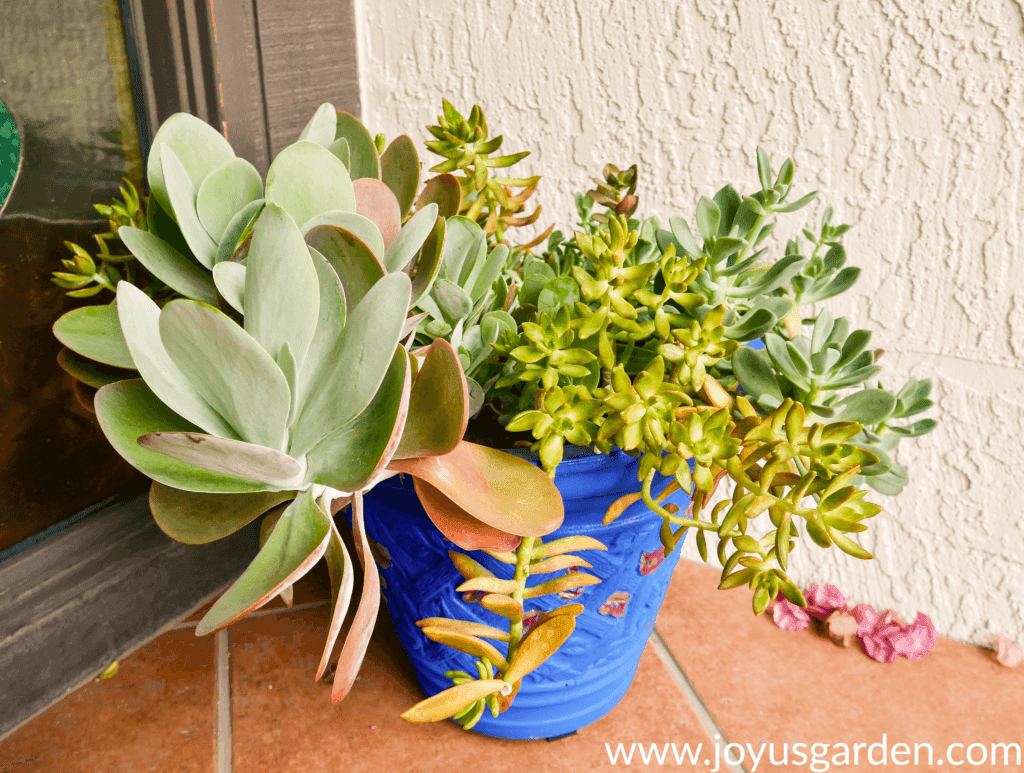
3 Reasons Why Succulents Grow Long Stems
In my experience, there are three reasons why succulent plants grow long, stretched-out, or leggy stems.
1) It’s their nature.
Some succulents naturally grow leggy over time, and their stretched stems must be cut back to keep them looking good. Others stay in a more compact rosette form and rarely need cutting back.
Succulent varieties like Kalanchoes, Aeoniums, and Echeverias tend to grow long stems as they become mature plants. In this (very) old post, you can see how I had to cut my Paddle Plant patch back because the stems were elongating.
2) They’re reaching for the light source.
If you’ve positioned them against a wall or in a corner, they’ll start reaching toward the light. This produces longer stems and less new growth.
This can also happen in the winter months when the sunlight is less plentiful.
3) The light they’re growing in is too low.
This may be true for your leggy succulents, especially if growing indoors. Your succulents may not get enough light, and you may notice leggy stems, paler foliage, and smaller leaves.
This could be due to the lack of sunlight or artificial light. You’ll have to move your succulents to a place with more sun exposure, get a grow light or two, or, if possible, move indoor succulents outdoors.
However, you’ll have to find a happy medium because too much sunlight, such as in a south or west-facing window, can cause their fleshy leaves to burn.
When To Prune Succulents With Long Stems?
Spring and summer are the best times. If you live in a temperate climate like me, early fall is fine too. You want to give your succulents a couple of months to settle in and root before the cooler weather sets in.
Here’s a general guide to pruning succulents.
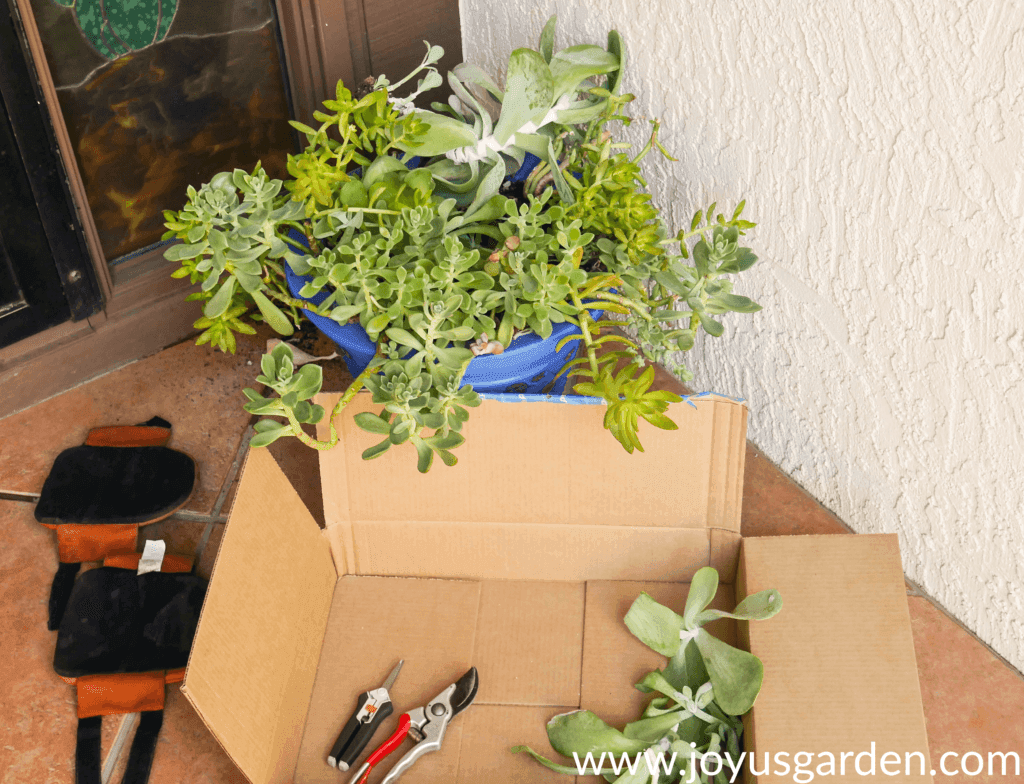
Why Should You Cut Back Stretched Out Succulents
Once a succulent stem gets bare, the leaves won’t grow back on it. You need to cut it back and propagate by stem cuttings or have it rejuvenate from the base (the piece of stem and roots still in the soil).
How far you cut back depends on how leggy it has gotten and where foliage growth has stopped.
You may need to go down to the base of the plant to cut. That was the case with my Paddle Plant patch; I took the stems down to where new offsets had formed at the base.
How to Cut Back Succulents With Long Stems
I use my trusty Felco hand pruners, which I’ve had for ages. If the stems are thin and soft, I prefer my micro pruning snips.
Whatever you use to make the cuts, make sure your pruning tool is clean and sharp. You want clean cuts, not jagged cuts, and you don’t want infection to set in.
When cutting, I prune straight across the stem above a leaf node. I used to take them at an angle but switched to straight across six or seven years ago. It doesn’t seem to make much of a difference.
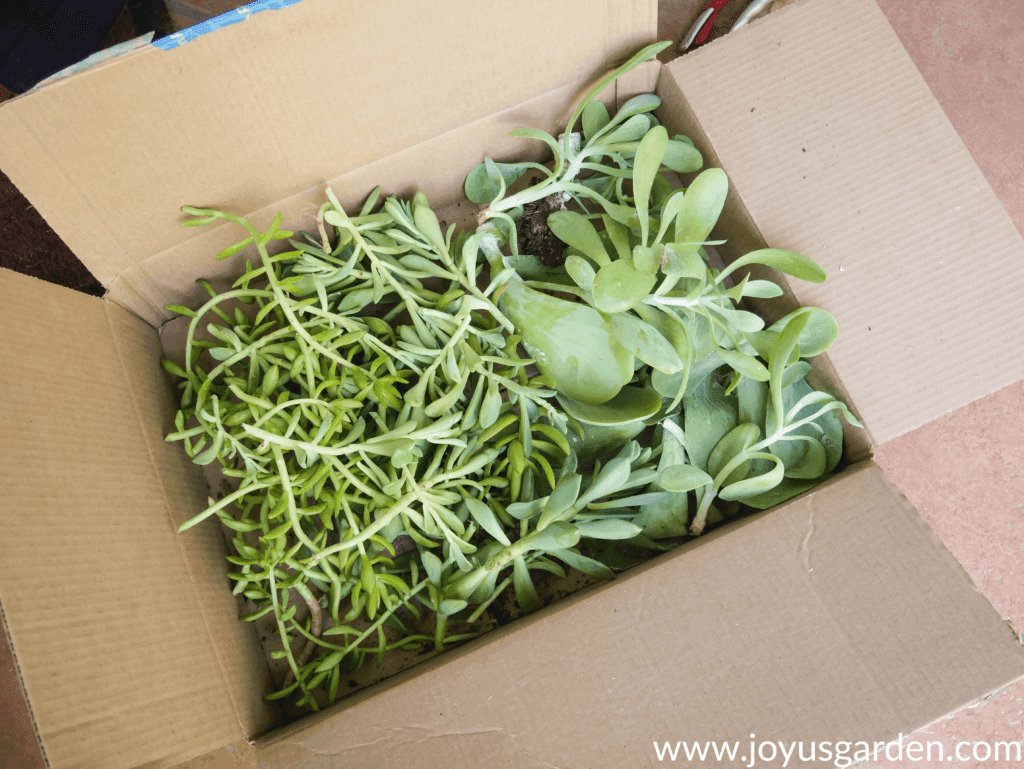
What Should You Do with the Cuttings?
Here’s what you do, whether your succulents grow in the ground or a pot, with those tall, stretched-out succulent stems.
You can propagate by stem cuttings or by leaf cuttings. Stem cuttings are a much faster method, but if you have the patience, try leaf propagation.
I got quite a few cuttings, as you can see. I put them in a long, low box, then moved them to my utility room with bright light but no direct sun. They need to be in a well-lit area, but they’ll burn if they get too much sunlight. The amount of light they need while healing over isn’t as great as they would need when growing as plants.
You’ll want to prep the cuttings. Cut off any curved stems and strip off leaves if needed. You want the stems to be as straight as possible because they’re easier to plant.
The cut end of long-stemmed succulents must heal for at least three to six days. Think of this like you would a wound healing over. Cuttings planted back in the soil too quickly before they have a chance to heal are more subject to root rot.
I’ve let some succulents heal over for nine months, and they grew just fine. Succulents with fine stems, like String Of Pearls, only need a couple of days. It’s hot here in Tucson, so I don’t heal succulents over for too long.
After planting, they’ll have new roots in 1-2 months.
We’ve done many posts and videos on indoor and outdoor succulent care, including propagation. You’ll find them in our Succulents Category.
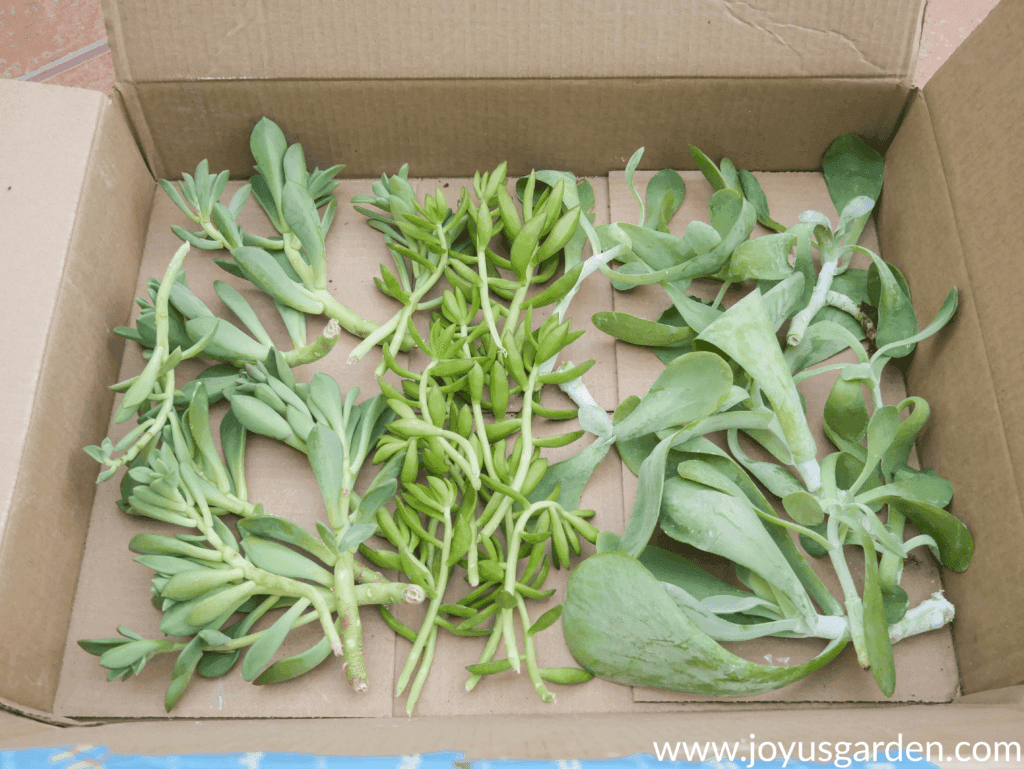
How to Plant Your Succulent Cuttings
1) Remove the top layer of soil (if planting them back in the same pot).
This planting was done two years ago, so the soil mix wasn’t too old or compacted. I removed the top 10″ to make room for a fresh mix. Succulents don’t root too deep, so removing it all wasn’t unnecessary.
2) Use a mix formulated for succulents & cacti.
Fill or top off the pot with succulent and cactus mix. Succulents need a loose mix that is well aerated so the water can thoroughly drain out and they don’t rot. I use this DIY succulent and cactus mix for all my succulent planting, indoors and outdoors.
3) Mix in compost.
(This is optional, but it’s something I always do). A few handfuls of compost enriches the soil naturally, so the roots are healthy and the plants grow stronger. I mixed some of the fresh blend in with the older soil mix. After the cuttings have rooted in, I’ll apply a 1/2″ to 1″ topping of worm compost. This is my favorite amendment, which I use sparingly because it’s rich.
4) Get ready to plant.
With the mix all prepped, it was time to plant. I had a couple of small plants from another pot and started with one of those. I then placed the cuttings in groupings that were pleasing to my eye. You may have to play around with them to get them to go how you want.
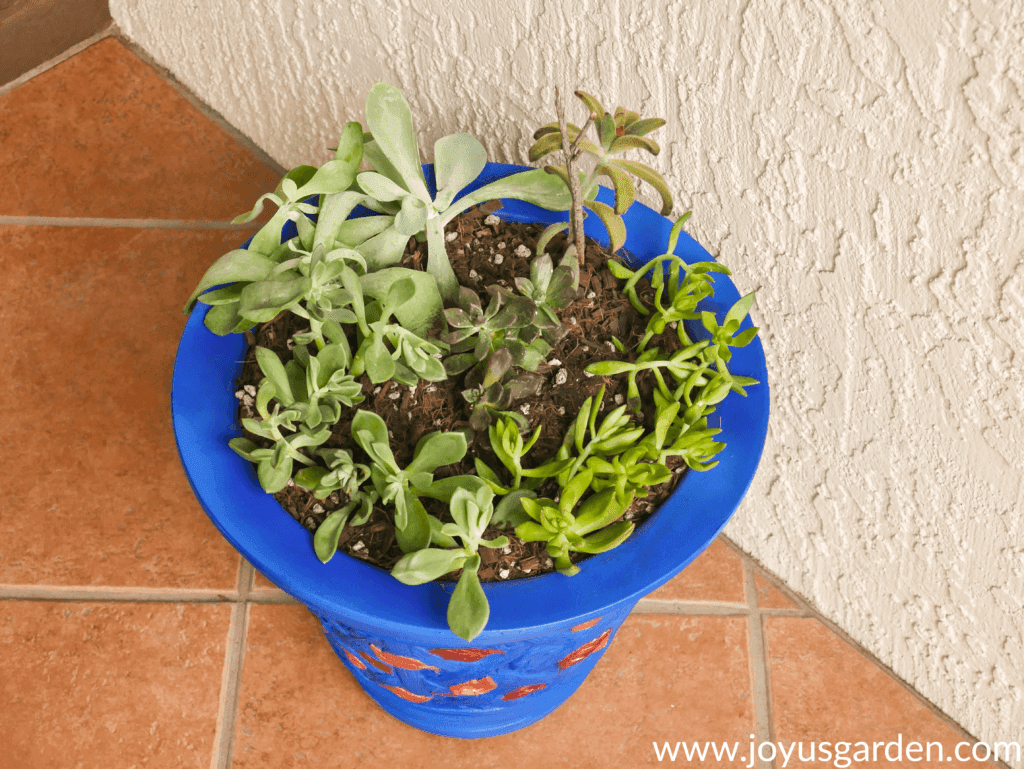
Note: How you arrange your cuttings is up to you. Just remember that some grow bigger and taller and will take up more real estate than others. I planted the Paddle Plants cuttings on the edge because the leaves are so big, and they produce babies like crazy, taking up more space.
Succulents With Long Stems Video Guide
How to Maintain the New Succulent Planting
Succulents are some of the easiest plants.
I let the new planting settle in for about five to seven days before watering the mix. I learned this early on, and it’s always worked well for me.
I’ll water this planting once a week until the weather cools. You don’t want to keep your cuttings as dry as you would an established plant. Remember, the roots are still forming.
Conversely, don’t give too much water, or the cuttings will rot out. Adjust according to your conditions.
Keep your cuttings out of any direct hot sun to avoid burn. Bright natural indirect sunlight (moderate to high light exposure) is the sweet spot.
Now that you know how to get new plants from cuttings, you will have a new succulent collection in no time!
Fertilizing/Feeding
I don’t fertilize cuttings when they’re rooting in because I feel they don’t need it. I do mix in a little compost and worm compost when preparing the potting mix.
When the cuttings have rooted in and started growing, I start a fertilizing routine.
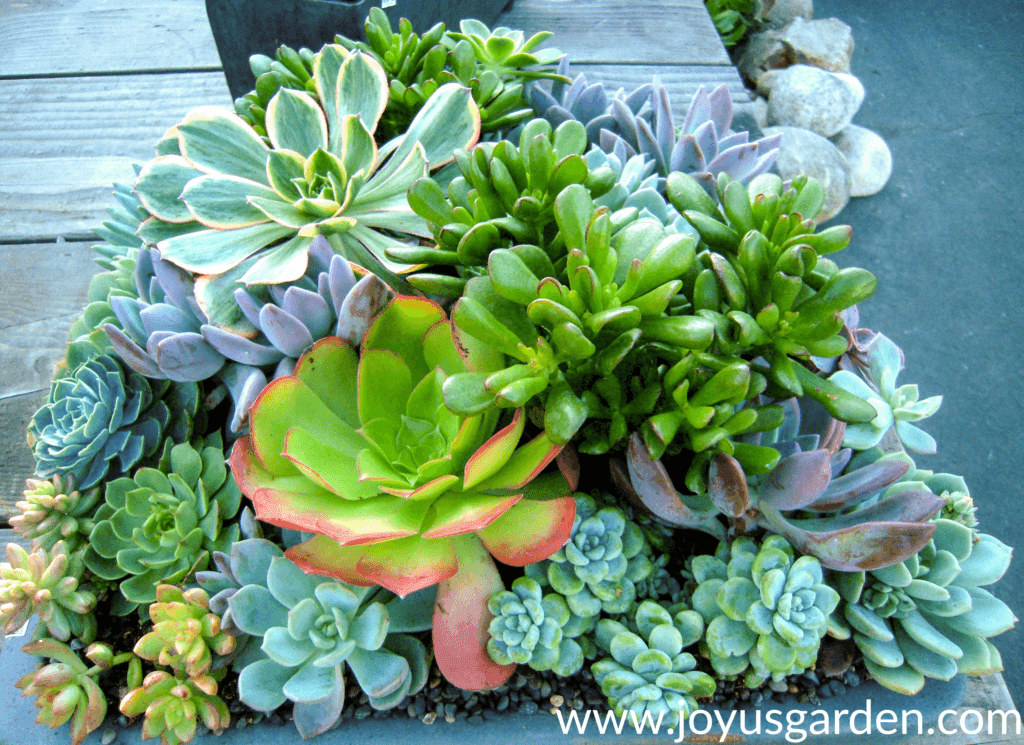
These steps also work with succulents that have long stalks and are getting too tall. If you have succulent plants growing long stems, simply give them a good haircut. They can take it and will come back stronger than ever. Gotta love these great plants!
Happy gardening,

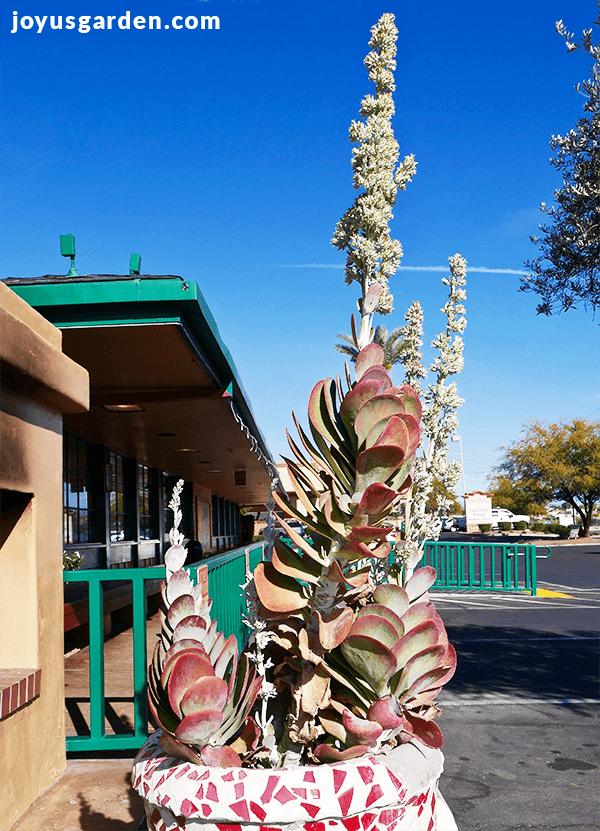

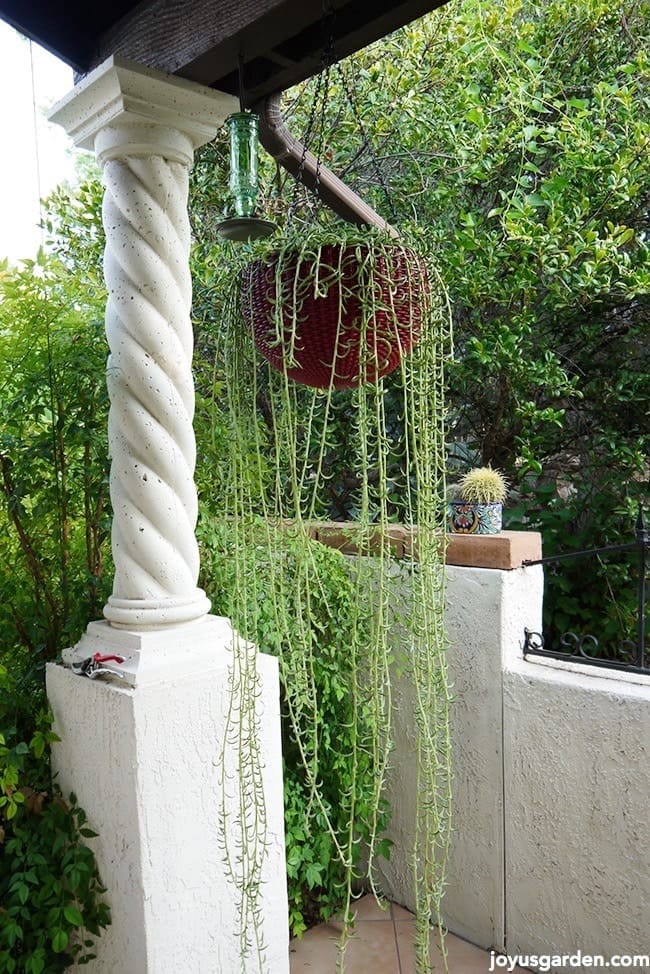
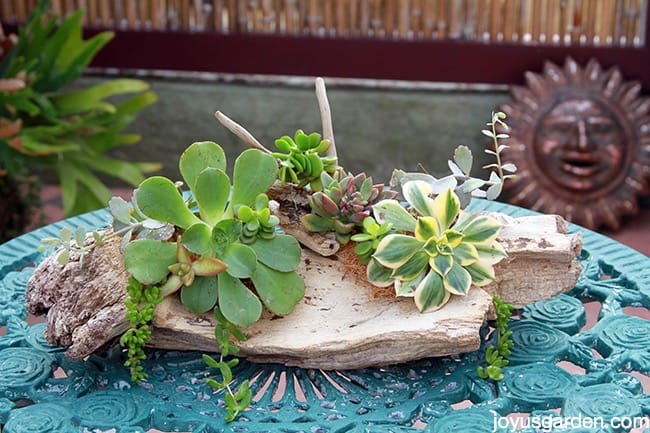
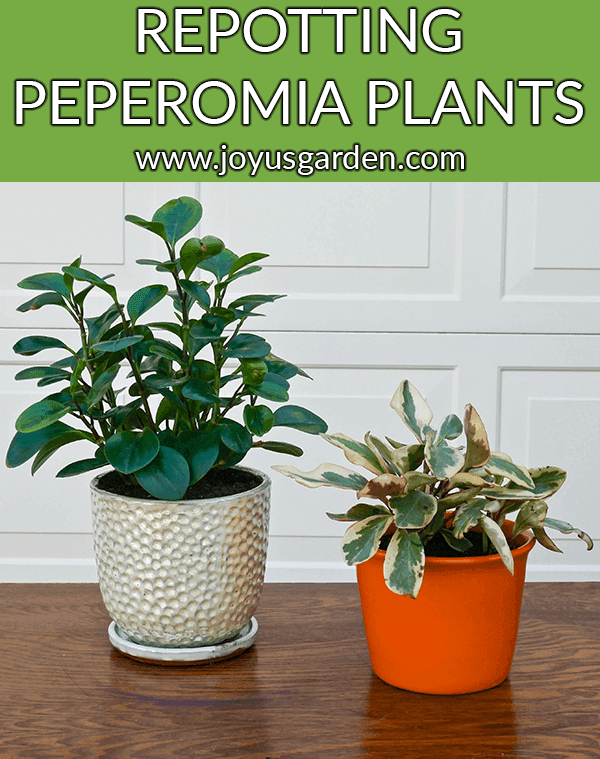
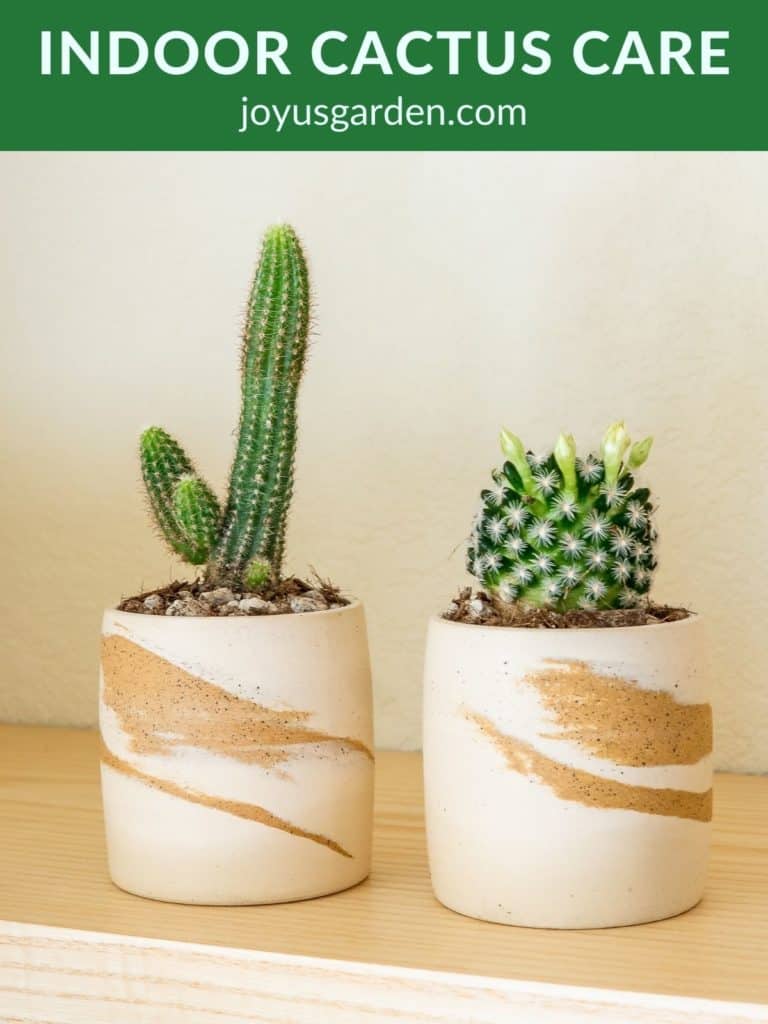

Thanks for the info. I’m not sure what type of succulent I have, but all the leaves on it died when I overwatered it. The stems look healthy. I’ve since repotted them in a dry succulent/cactus mix and am trying to get it so it grows leaves again. I have a few bare stems. I see from this article that I have to cut it back and propagate it by cutting the stems… will it eventually grow leaves back on it? I want to try and bring it back to life! Thanks for your help!
Hi – You’re welcome. I’m not sure what succulents you have but most will grow back leaves on the stems. the new growth usually appears at the top. Nell
My area look dried up even though there is green growth in the top. Will those also work as stem cuttings?
Hi Carol – I’m assuming by “area” you mean stem. A portion of the stem (even an inch or 2) need to be living to have it propagate successfully. You can also do leaf cuttings. Nell
Question 1: I was gifted a planter of mixed succulents, which has done very well. However, 1 plant is getting leggy: if I take a cutting, am I to dig out the parent plant or will it put out fresh rosette leaves?
Question 2: The entire upper portion of one of the most striking plants was knocked off by human or canine, nearly but not quite to the base. Is this plant likely to rejuvenate?
Finally, I am going to purchase a paddle kalanchoe. Assuming I keep it happy, when it becomes unwieldy, do I take a cutting from it & start over? In other words, what would you do with the original kalanchoe? Thank you.
Kerry – 1) Depending on the succulent, it should put out new growth. 2) I don’t know what the succulent is so I can’t say. 3) Paddle Plants produce pups at the base. Nell
Hello. I have something called a Sedeveria Peridot Passion. A bunch of the leaves have fallen off closer to the base. Will these leaves grow back or should i cut & restart? Thank you
Kala – No they won’t. I have to prune & restart some of my succulents every season. New growth should appear at the base after pruning. Nell